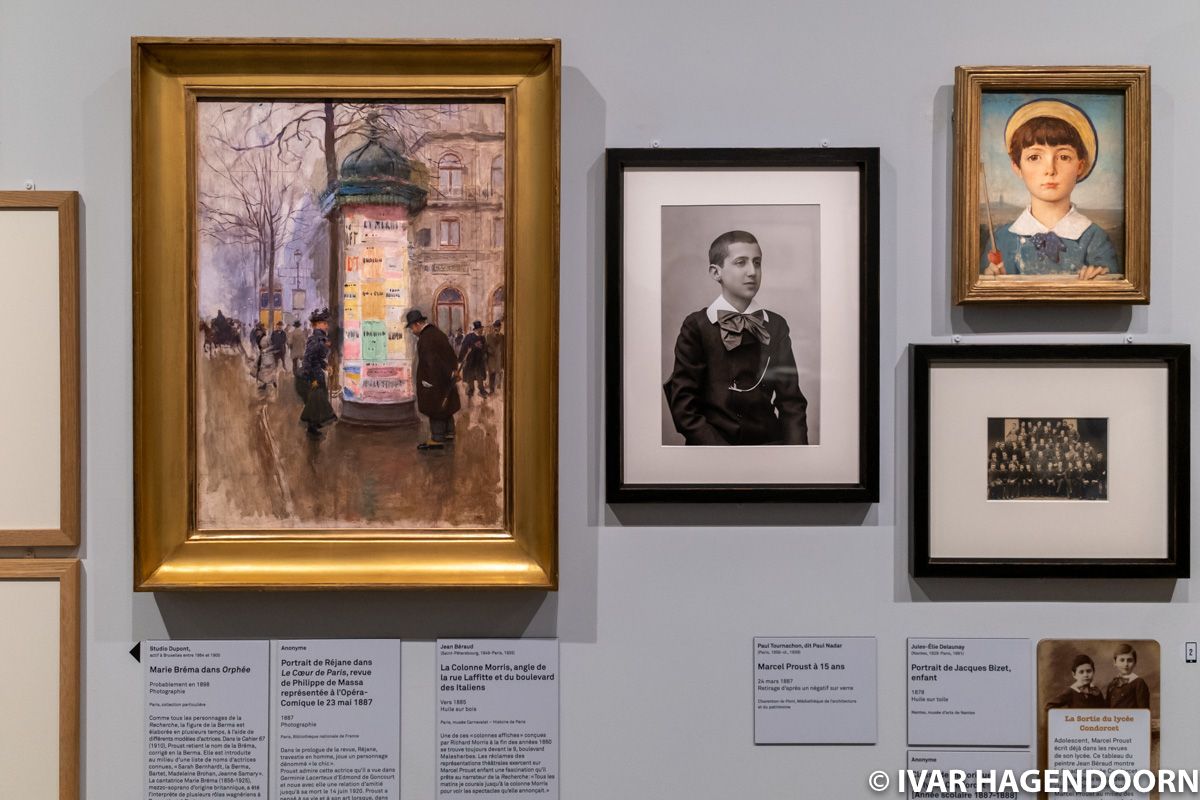
To mark the 150th anniversary of his birth and the centenary of his death the Musée Carnavalet has dedicated a wonderful exhibition to Marcel Proust, his relationship with Paris and the place of the city in "À la recherche du temps perdu" (In Search of Lost Time).
The Musée Carnavalet has brought together around 280 works, some of which exhibited here for the first time, ranging from paintings, photographs, manuscripts, posters, fashion accessories and architectural models to furniture, archival footage, excerpts from film adaptations and sound recordings, which bring to life the Paris of Marcel Proust and his novel "À la recherche du temps perdu".
The first part of the exhibition explores the Paris of Marcel Proust. Marcel Proust was born on 10 July 1871 in the rue de La Fontaine, in Paris’ 16th arrondissement, and died on 18 November 1922 in an apartment in rue Hamelin, not far from the Arc de Triomphe. The exhibition traces the houses where he lived and the salons, cafés and theatres that he frequented and even the shops where he bought flowers and the pharmacy where he procured the medication against his asthma. As can be seen on a wall sized map of Paris, Proust spent most of his life on the “rive droit”, the right bank of the Seine.
The exhibition includes various photographs and portraits of Marcel Proust, of his friends and of the people that inspired the characters in "À la recherche du temps perdu": Laura Hayman, who was the inspiration for Odette de Crécy, Robert de Montesquiou, the alleged model for baron de Charlus, and the countess Greffulhe, the duchess of Guermantes in the novel.
Proust died after completing the draft of the last volume of "À la recherche du temps perdu", but before being able to edit the proofs of the last three volumes. The exhibition includes the proofs of some pages of "À l'ombre des jeunes filles en fleurs", the second volume of "À la recherche du temps perdu", which shows the extensive changes that Proust made.
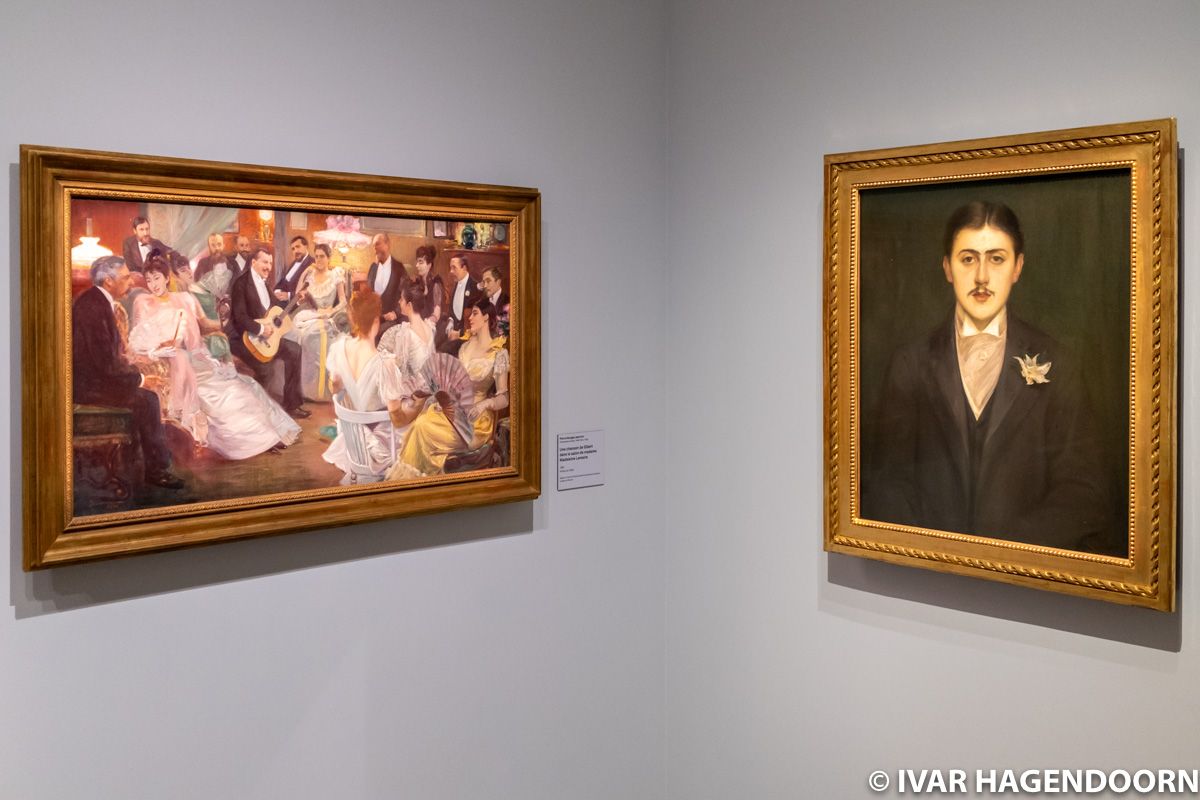
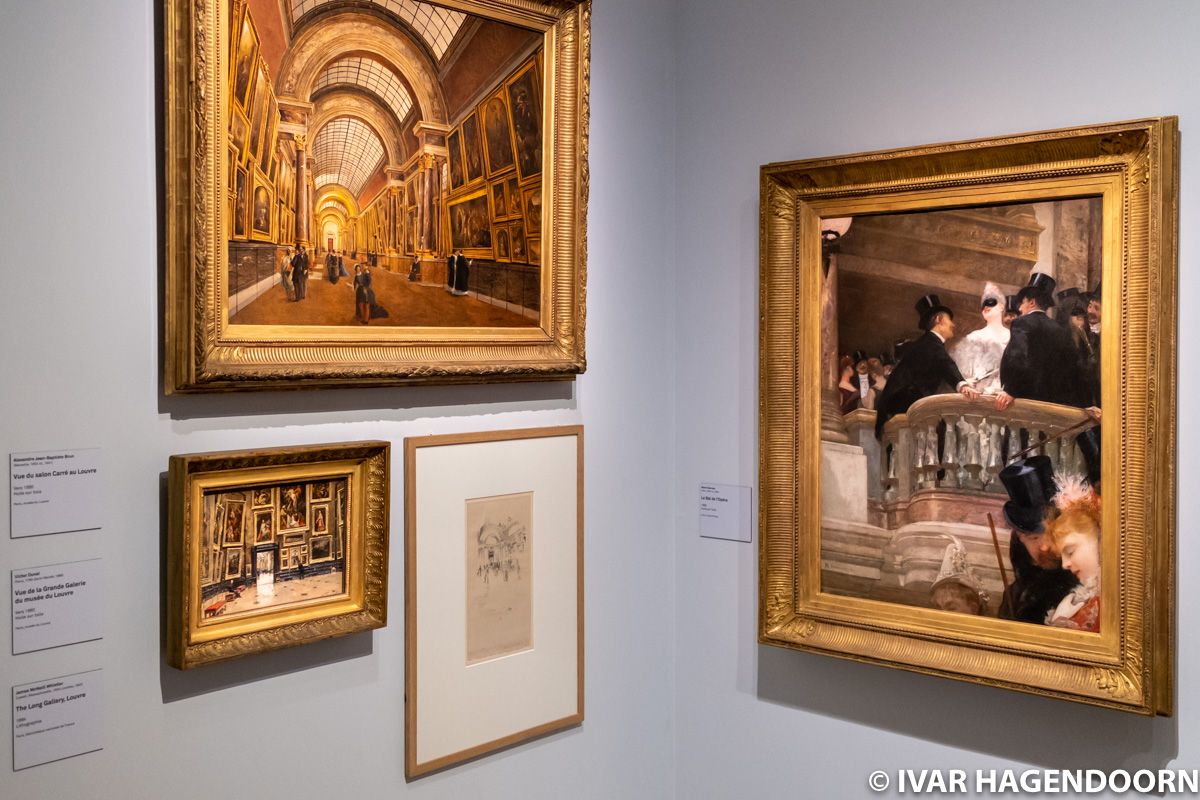
Marcel Proust. Un roman Parisien
The second part of the exhibition is a journey through the fictional Paris of "À la recherche du temps perdu". For even though part of the novel is set in the fictional towns of Combray and Balbec, the real setting of the novel, which provides both its historical and geographical location, is Paris at the turn of the 20th century. Like Proust himself the main characters of the novel dwelled in Paris’s rive droite. The hôtel of Charles and Odette Swann is situated at the Place de l’Étoile, while the Guermantes lived in the rue du Faubourg Saint-Honoré.
Each room of the second part of the exhibition focuses on a different volume of the novel, a different set of characters and a different part of Paris, from the grands boulevards to the Bois de Boulogne.
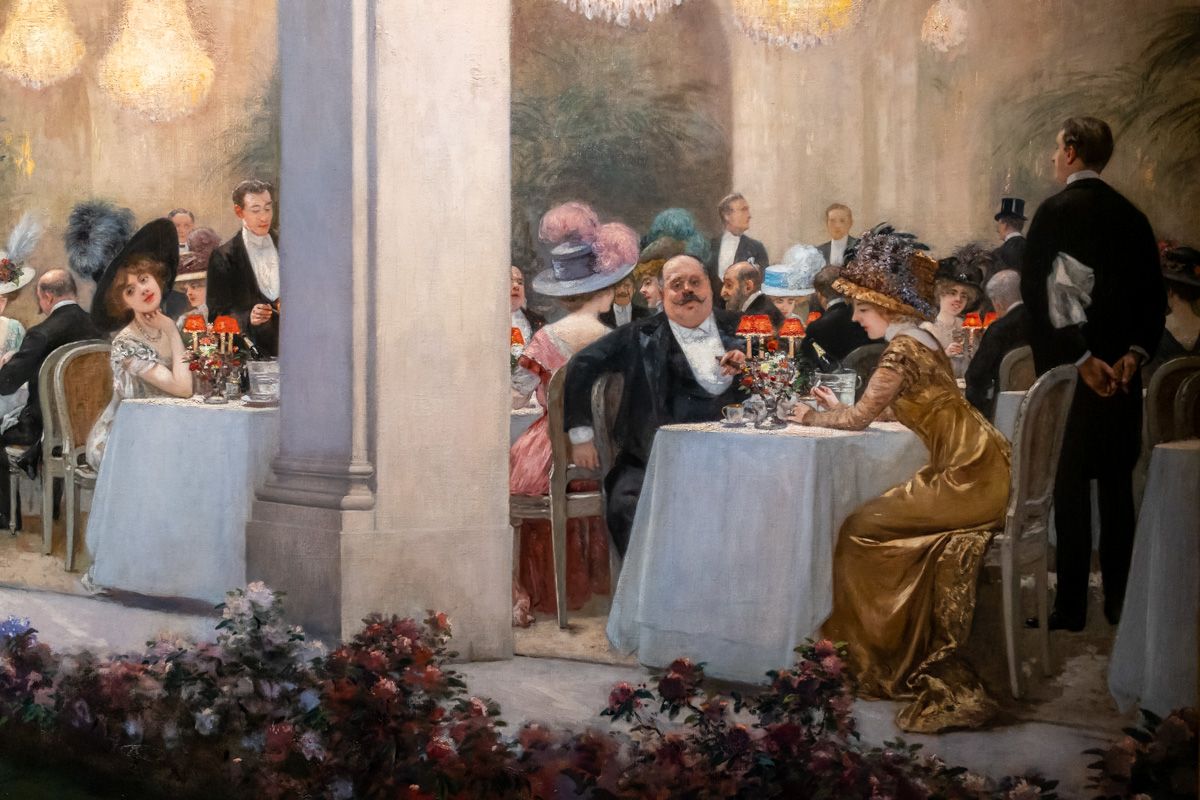
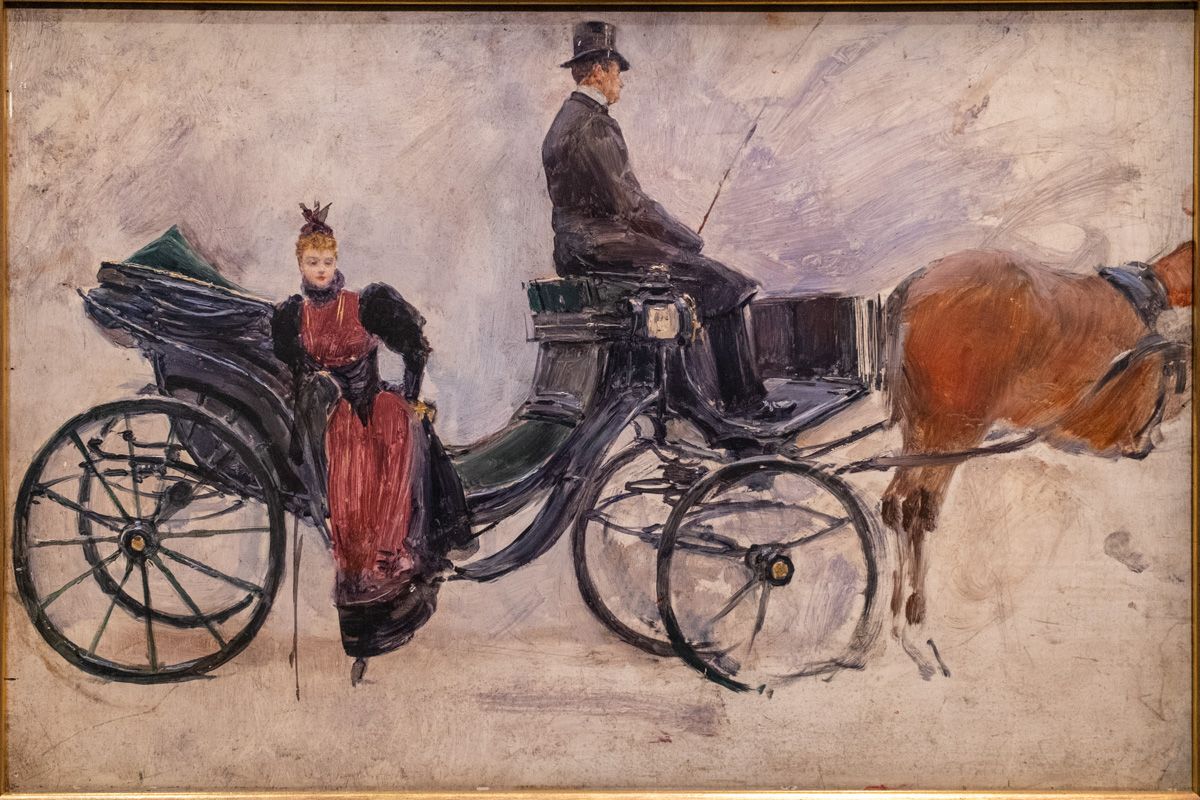
Henri Gervex, Une soirée au Pré Catalan, 1909 (detail) (left); Jean Béraud, La Victoria, 1880 (right)
The Paris of Marcel Proust, with its focus on the aristocracy and the beau monde, is quite different from the London of Charles Dickens. The Paris in "À la recherche du temps perdu" is a highly aestheticized, fetishized and poetized Paris. It is a state of mind, more than a city of brick and steel.
If the general subject of the novel is time, Proust endowed space with the same power of reminiscence. Or to quote the final words of "Du côté de chez Swann", which I won’t attempt to translate into English:
“Il suffisait que Mme Swann n’arrivât pas toute pareille au même moment, pour que l’Avenue fût autre. Les lieux que nous avons connus n’appartiennent pas qu’au monde de l’espace où nous les situons pour plus de facilité. Ils n’étaient qu’une mince tranche au milieu d’impressions contiguës qui formaient notre vie d’alors; le souvenir d’une certaine image n’est que le regret d’un certain instant; et les maisons, les routes, les avenues, sont fugitives, hélas, comme les années.”
"Marcel Proust. Un roman Parisien" is a wonderful exhibition that is not to be missed. If you can’t make it to the exhibition, the accompanying catalogue is a real treasure trove as well, with even more material. I should add that the Musée Carnavalet, which reopened in 2021 after an extensive renovation by Chatillon Architects in collaboration with Snøhetta, is well worth a visit in itself. If you stroll through Le Marais and wonder at the beautiful garden and building behind the iron gates, do turn the corner into the rue de Sévigné and visit the museum.
Marcel Proust. Un roman Parisien is at the Musée Carnavalet in Paris until 10 April 2022.
I highly recommend the album "La Sonate de Vinteuil" by Maria & Nathalia Milstein, with music by Camille Saint-Saëns, Claude Debussy, Reynaldo Hahn and Gabriel Pierné, which evokes Proust’s musical universe.